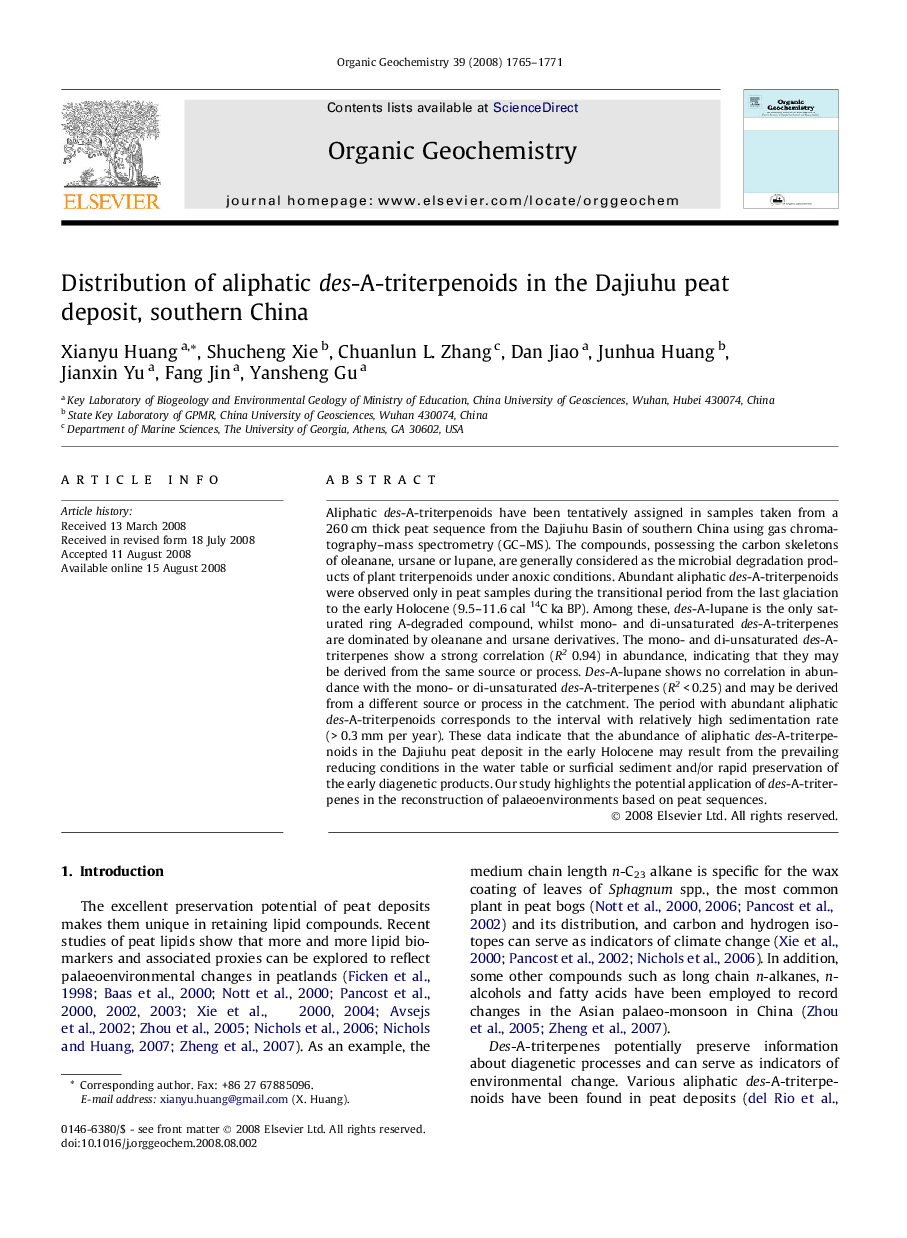| Article ID | Journal | Published Year | Pages | File Type |
|---|---|---|---|---|
| 5162886 | Organic Geochemistry | 2008 | 7 Pages |
Abstract
Aliphatic des-A-triterpenoids have been tentatively assigned in samples taken from a 260 cm thick peat sequence from the Dajiuhu Basin of southern China using gas chromatography-mass spectrometry (GC-MS). The compounds, possessing the carbon skeletons of oleanane, ursane or lupane, are generally considered as the microbial degradation products of plant triterpenoids under anoxic conditions. Abundant aliphatic des-A-triterpenoids were observed only in peat samples during the transitional period from the last glaciation to the early Holocene (9.5-11.6 cal 14C ka BP). Among these, des-A-lupane is the only saturated ring A-degraded compound, whilst mono- and di-unsaturated des-A-triterpenes are dominated by oleanane and ursane derivatives. The mono- and di-unsaturated des-A-triterpenes show a strong correlation (R2 0.94) in abundance, indicating that they may be derived from the same source or process. Des-A-lupane shows no correlation in abundance with the mono- or di-unsaturated des-A-triterpenes (R2 < 0.25) and may be derived from a different source or process in the catchment. The period with abundant aliphatic des-A-triterpenoids corresponds to the interval with relatively high sedimentation rate (> 0.3 mm per year). These data indicate that the abundance of aliphatic des-A-triterpenoids in the Dajiuhu peat deposit in the early Holocene may result from the prevailing reducing conditions in the water table or surficial sediment and/or rapid preservation of the early diagenetic products. Our study highlights the potential application of des-A-triterpenes in the reconstruction of palaeoenvironments based on peat sequences.
Related Topics
Physical Sciences and Engineering
Chemistry
Organic Chemistry
Authors
Xianyu Huang, Shucheng Xie, Chuanlun L. Zhang, Dan Jiao, Junhua Huang, Jianxin Yu, Fang Jin, Yansheng Gu,
